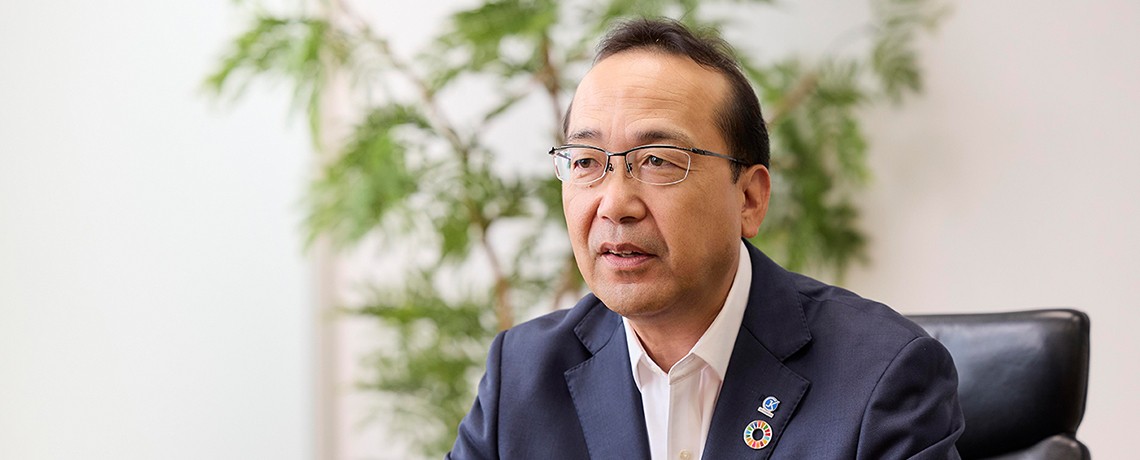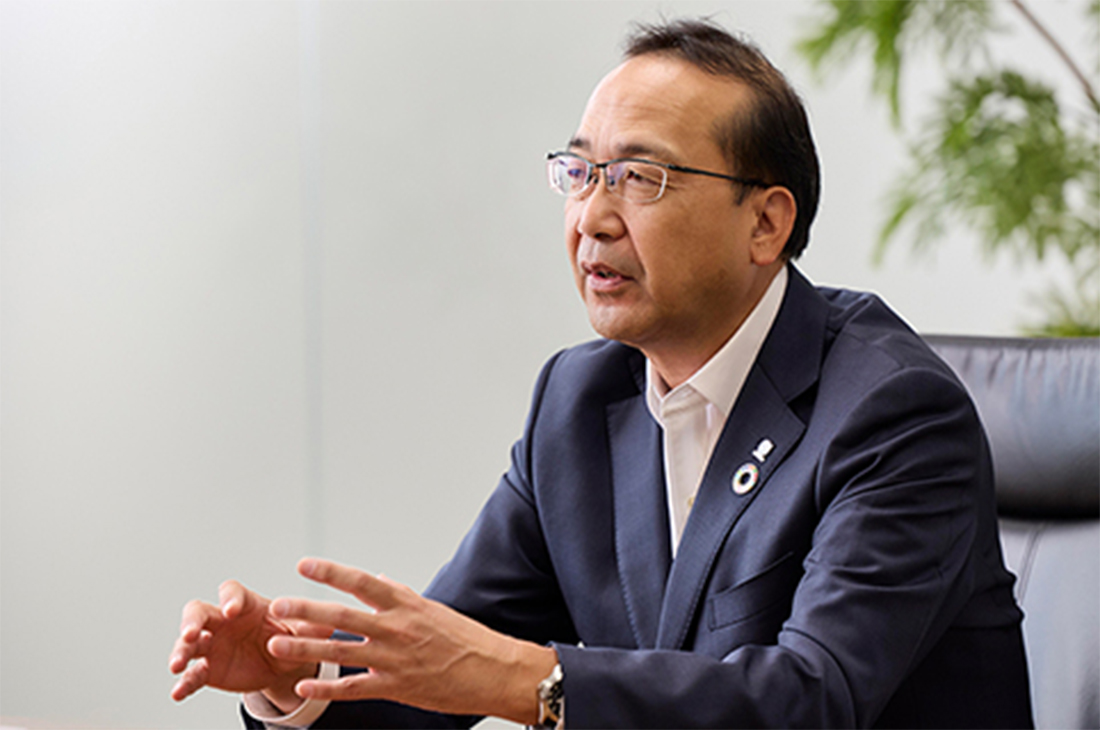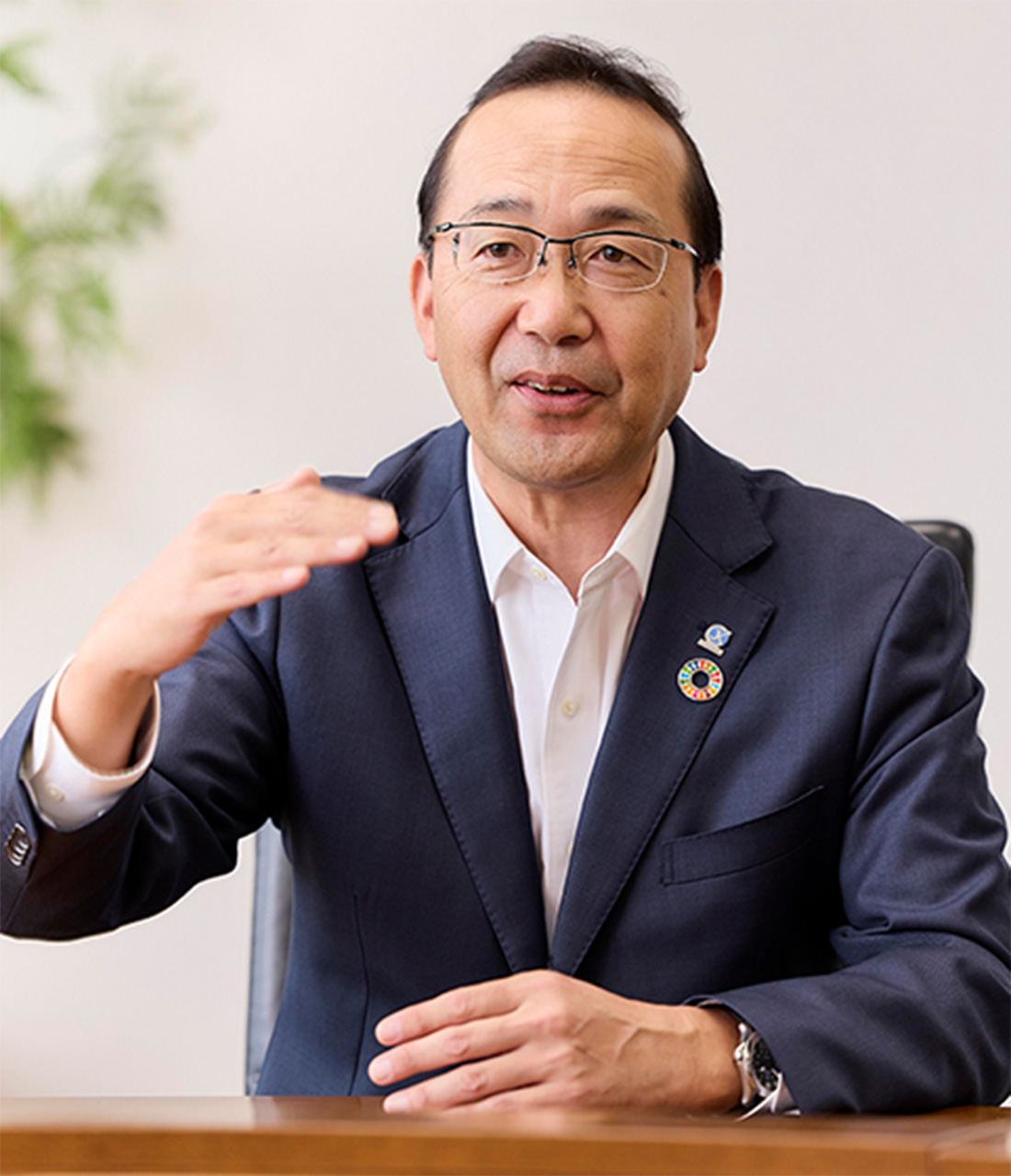Management Team Interview - Kazuyoshi Hayashi -

Kazuyoshi Hayashi
Managing Executive Officer, Assistant to Head of Administrative Division, General Manager of Corporate Strategy Department, Head of New Business Development
The conflicts caused by diversity lead to new “Change for Growth”

An invisible sense of value is JVCKENWOOD’s strength.
Diversity can be divided into “superficial diversity” that is easy to see, such as age, gender, nationality and race, and “deep diversity” that is difficult to see, such as religion, culture, sense of value, experience and skill. At JVCKENWOOD, we are promoting initiatives for diversity and inclusion from both the superficial and deep aspects, and we think that deep diversity is one of our company’s strengths.
In the background to this is the management integration in 2008. I think that the first diversity and inclusion initiative for JVCKENWOOD was the coming together of the former Victor Company of Japan (JVC), whose engineers led groundbreaking achievements such as world-first and world-smallest products, and the former Kenwood, which excelled in design and marketing in addition to technology. Each had their own history and culture, and the hardships they overcame and the successes they experienced were also different. At first, there were also conflicts* due to differences in their views of work and skills, which are deep senses of value.
This can happen more easily as business grows, but without change, business cannot grow. Conflict is nourishment for progress and growth, and allows us to create new business while renewing our existing sense of value.
* Conflict: An English word meaning opposition or clash of opinions. It is a state of tension in which different opinions and demands collide.

Diversity provides the ability to break through and open up new business.

Differences in senses of value lead to the creation of new business and innovation through the realization of inclusion. After the business integration, I saw such a situation, and at times, it removed the constraints that had been imposed by our former sense of value.
One case was our new entry into the dashcam business, which happened in 2014. With a strategy transcending our business framework, including the deployment of a development unit separate to our existing business, and the appointment of a business manager recruited from a trading company mid-career, we switched from being technology oriented to being market oriented, which resulted in a quick introduction into the commercial market for dashcams, and entry into the OEM market. These achievements have enabled us to grow rapidly into a big business.
And another case was the launch of Telematics Service Division. The predecessor of Telematics Service Division was established in 2016 as a team within Corporate Strategy Department comprised of two existing employees and two mid-career recruits. It became independent as Solutions Development Department in 2017 and started full-scale sales activities in 2018. It started activities as a full-scale business division as DX Business Division in 2019, and became an organization that achieved a rare success at our company by exceeding sales of well over 10 billion yen in fiscal year 2020. Sales now exceed 20 billion yen and the division is also generating new business including digital transformation.
To start something new, you cannot avoid breaking the system or changing your mindset. However, even if there are differences of opinion, the ability and experience of a diverse workforce provide flexibility, pliancy and speed for change, and lead to a strong willingness to resolve issues. I think that differences in senses of value generate creativity and new value, leading to the ability to break through.

Investing in human resources is the catalyst that allows the realization of inclusion.
To realize inclusion, it is effective to acquire diverse human resources from outside. There is a word used at the moment, “open innovation,” but situations that cannot be overcome solely by members of the same company raised in the same environment can be resolved by new investment in human resources. In other words, it is probably the best catalyst to revitalize the workplace. The same can be said not only for mid-career recruitment, but also for transcending business areas and departments. That is because I have personally experienced various business areas and have realized that rotation is extremely effective for diversity and inclusion. It is precisely why I feel we should have an appropriate rotation of human resources within the company.
To that end, it is important to implement training matched to the business in the new division you are transferred to. For example, if the goal is the development of human resources that will realize innovation, it is important to create unique curriculums for each division, such as drawing up business ideas or creating and managing teams, which are required for new business development, and to create opportunities for learning at external educational institutions.
For JVCKENWOOD to promote “Change for Growth,” it will be essential to have innovators equipped with intentionality, the ability to think and the ability to experiment. I believe that by creating a resilient and innovative organization that can cause conflict in the good sense through diversity and inclusion, we will be able to make the leap to becoming an excellent company that is both strong and shrewd enough to survive and flourish in various business.



* Affiliations and job titles are as of the date of publication.